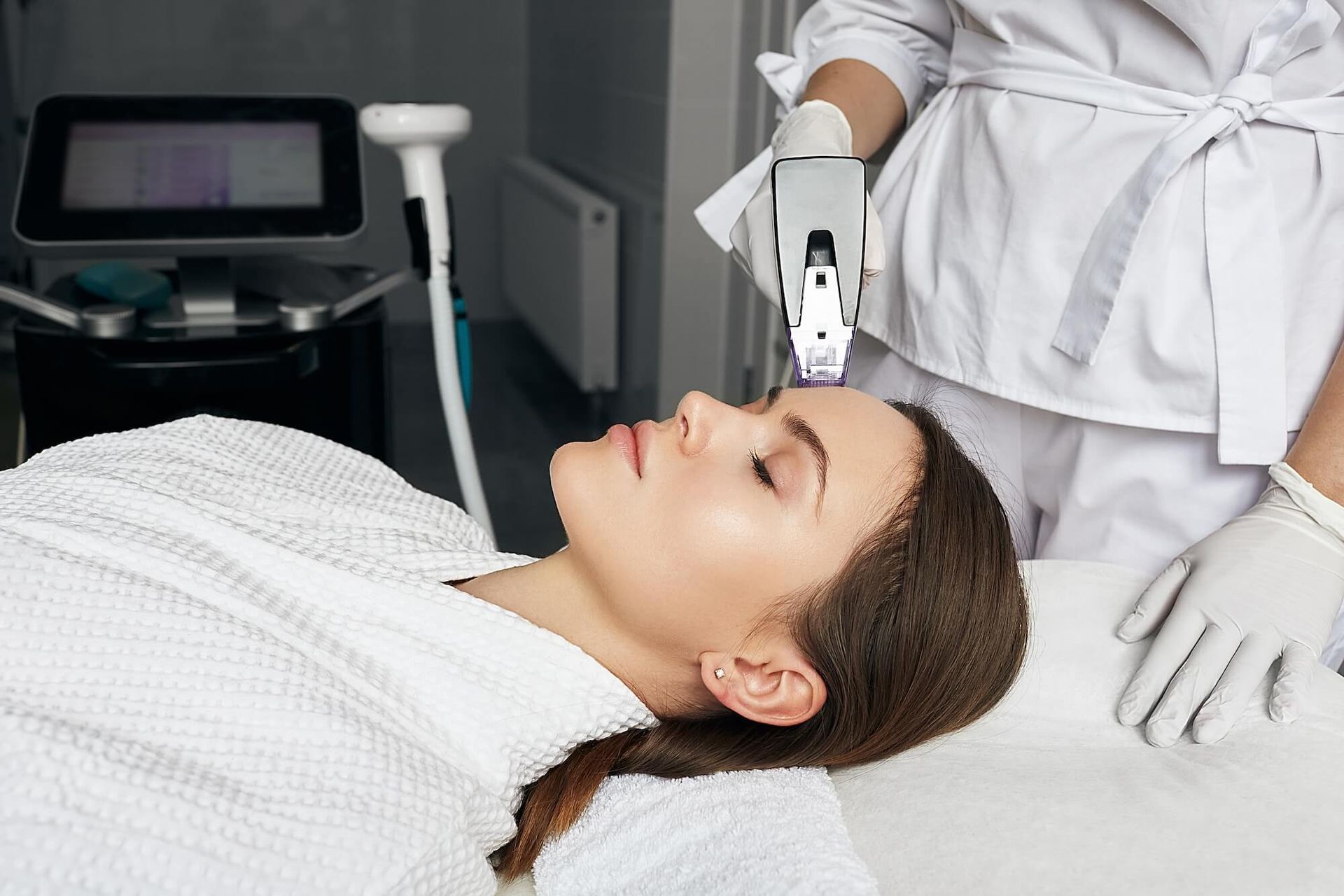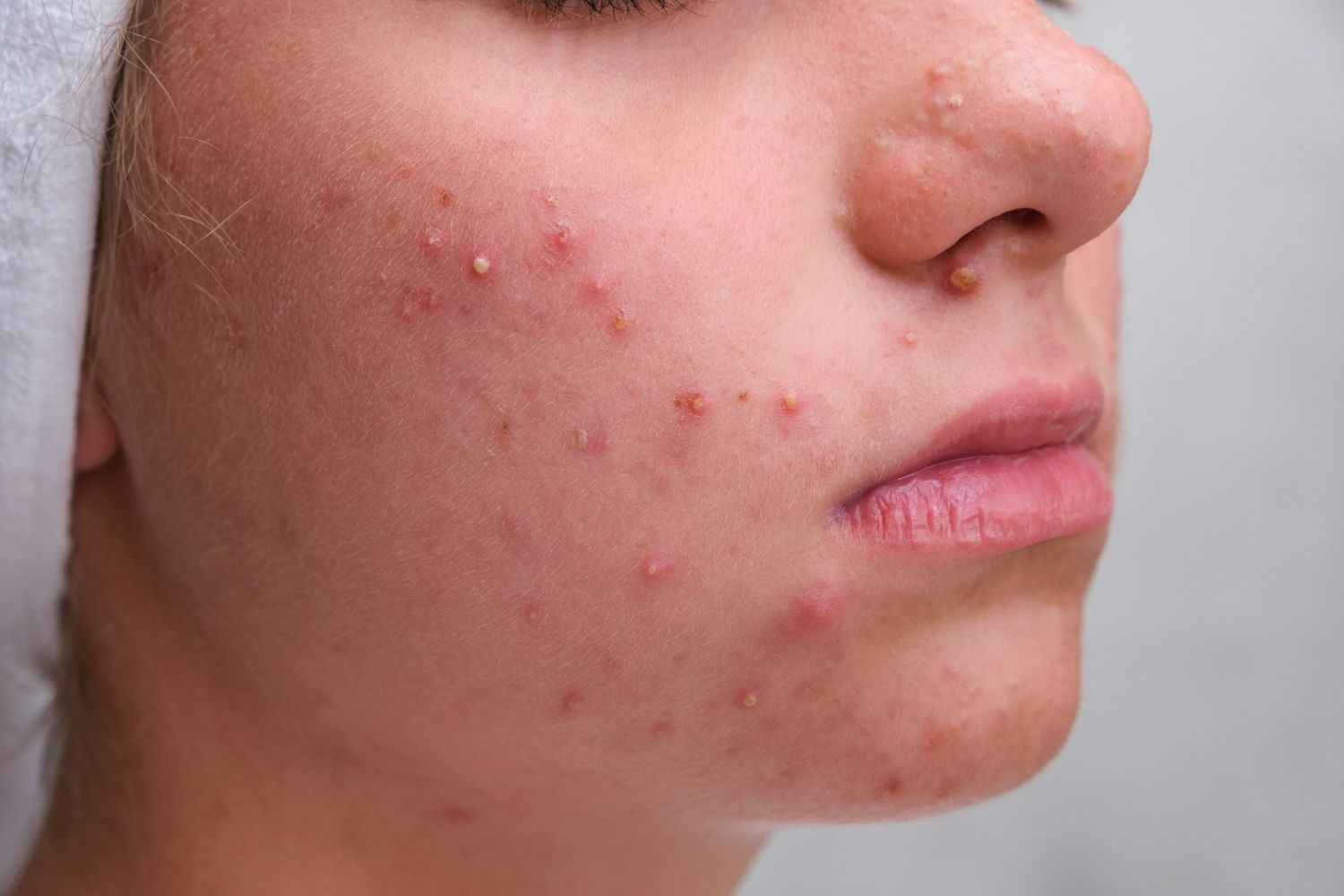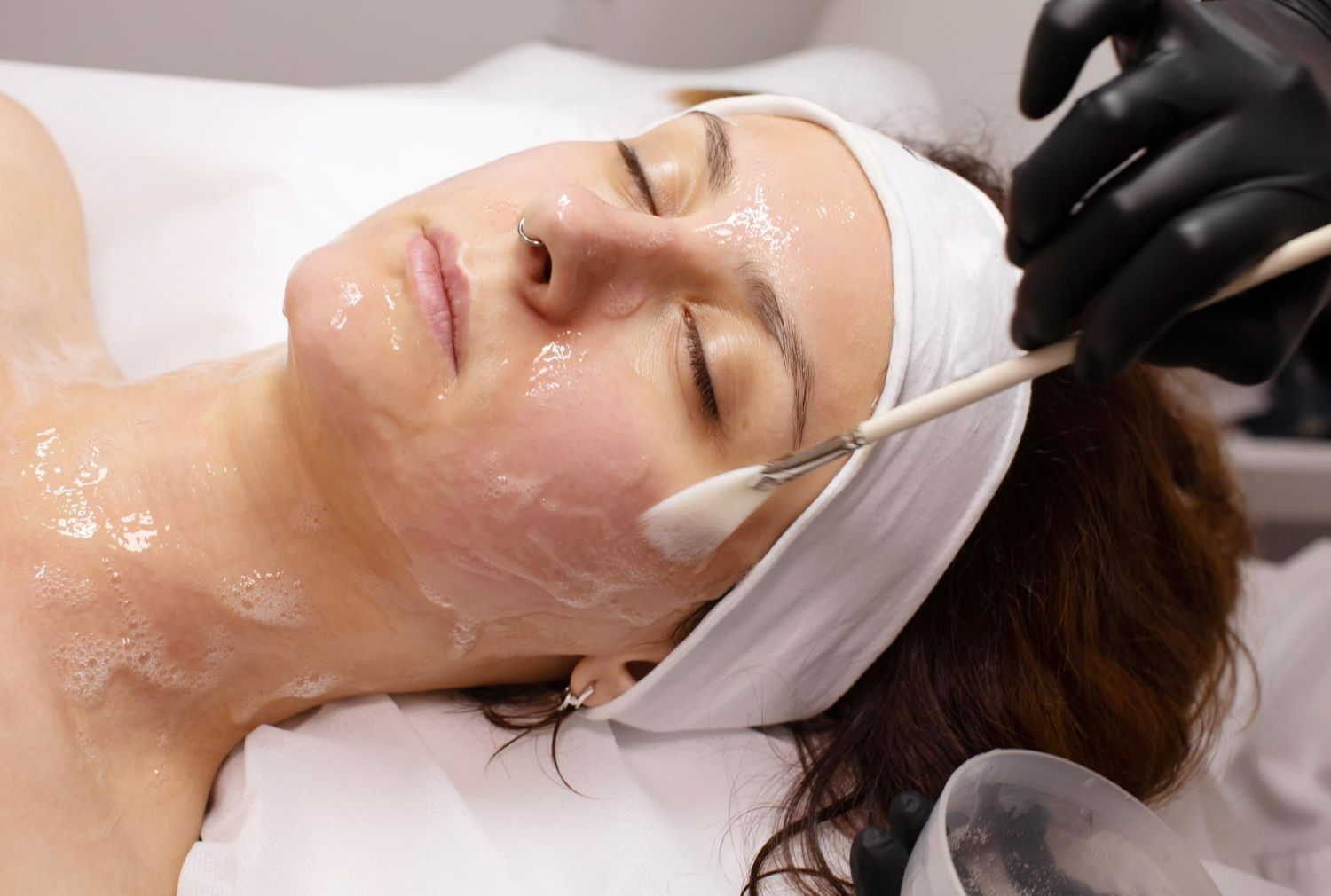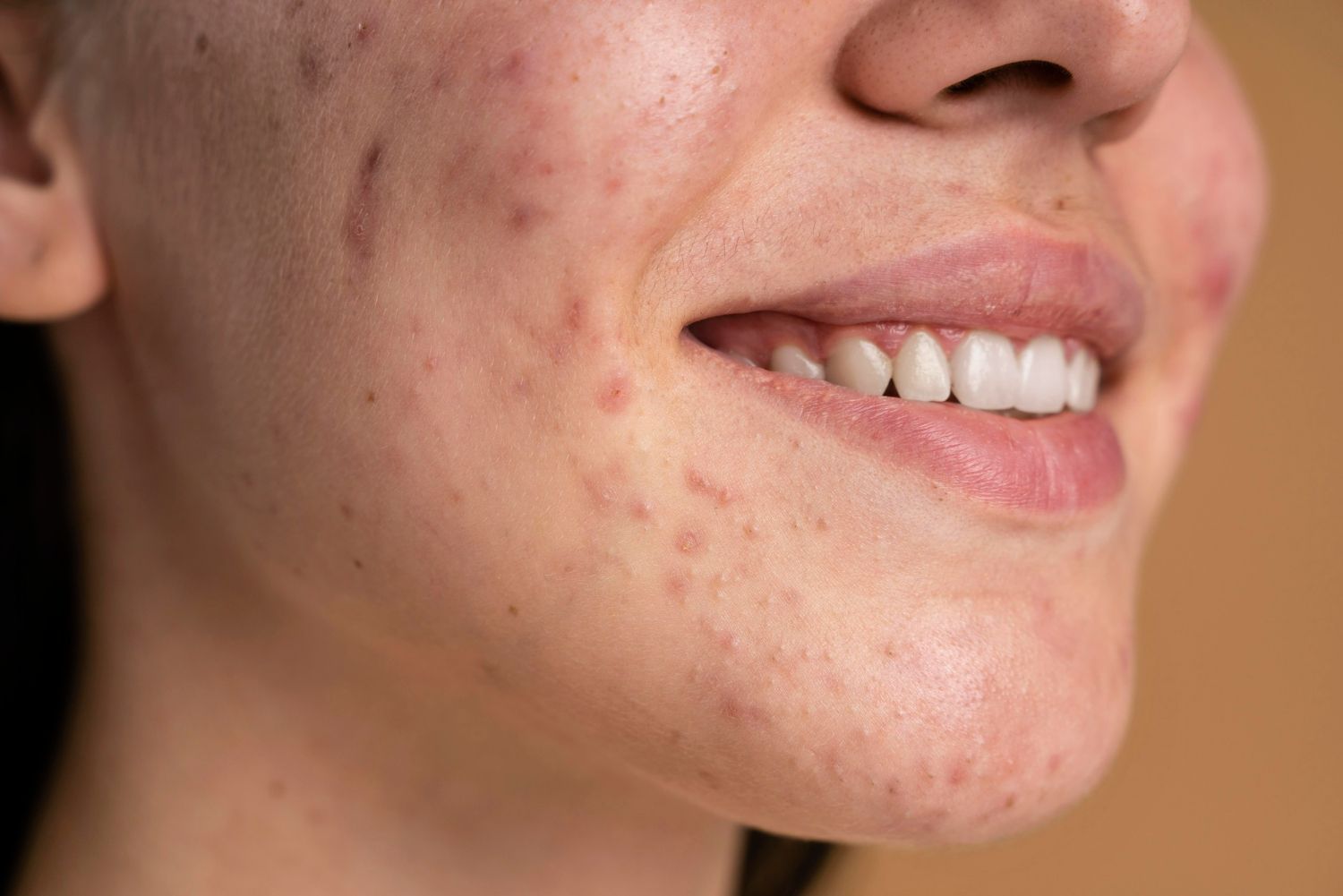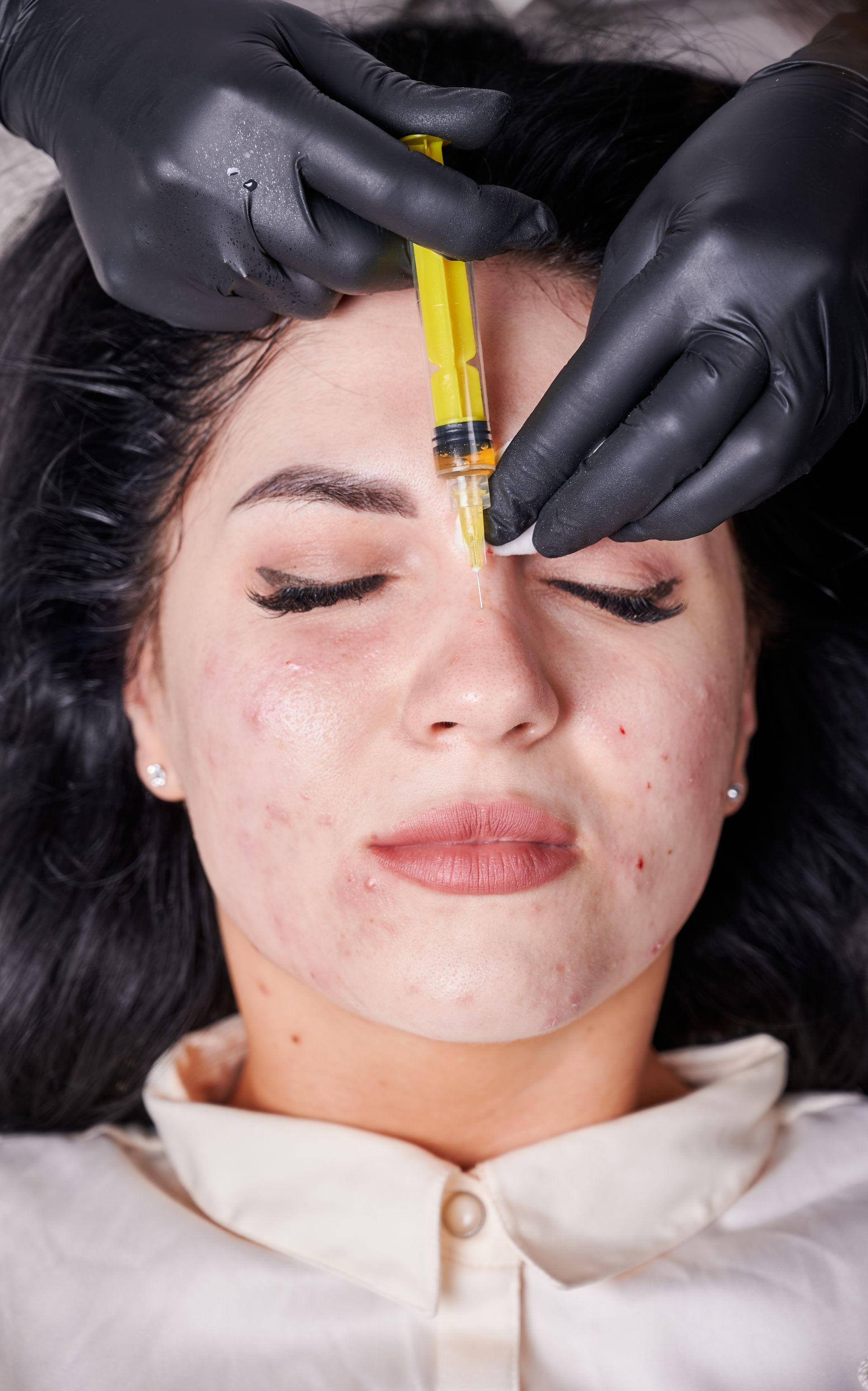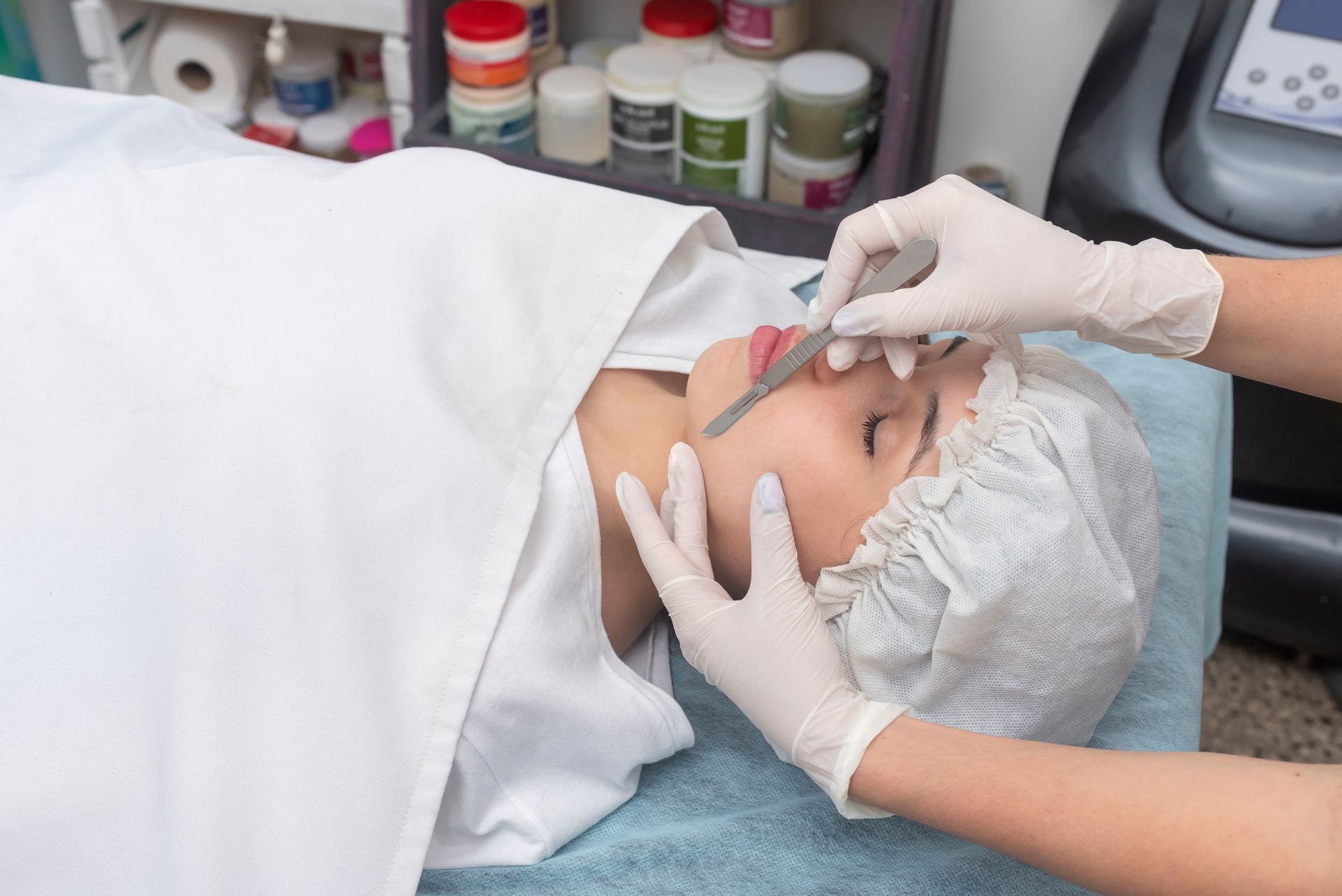Post-Inflammatory Skin Changes: Treating Dark and Light Spots After Acne, Surgery, Burns, and Sun Exposure
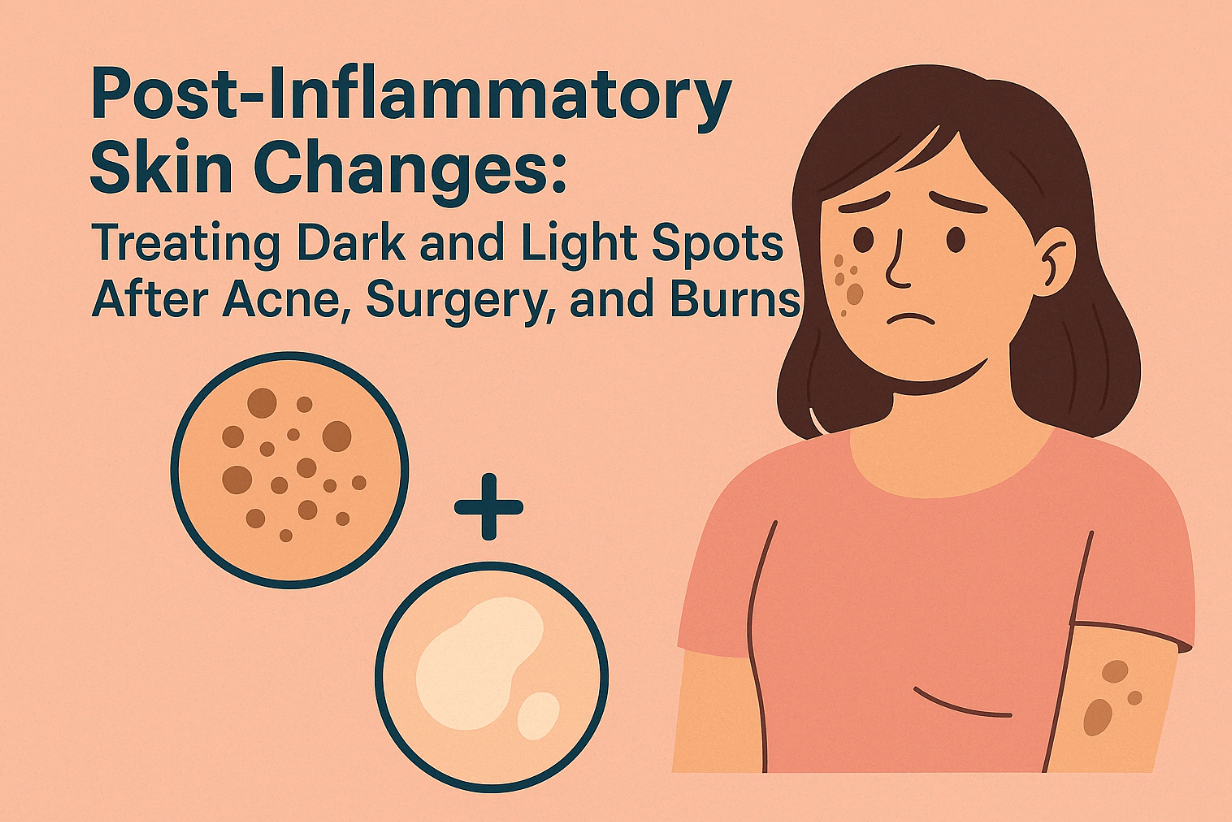
Key Takeaways
- Normal skin response: Post-inflammatory pigmentation is your skin's natural reaction to inflammation or any injuries.
- Two types: Can result in either dark spots (hyperpigmentation) or light spots (hypopigmentation)
- All skin tones affected: Medium to darker skin tones experience more significant and longer-lasting effects
- Multiple effective treatments: From topical solutions to advanced laser technologies
- Personalized approach: Derm.ca's medical expertise ensures treatments tailored to your specific skin needs
Have you noticed dark or light spots lingering on your skin after acne has healed, a burn has recovered, or a surgical wound has closed? These persistent marks aren't traditional scars but rather post-inflammatory pigmentation changes. At Derm.ca, Calgary's leading dermatology clinic, we understand how these discolorations can impact your confidence and have developed effective approaches to address both types of pigmentation changes.
Understanding Post-Inflammatory Pigmentation
Post-inflammatory pigmentation occurs when skin inflammation disrupts normal melanin production. This common skin response happens after inflammation from various sources:
- Acne breakouts (particularly cystic acne)
- Surgery or cosmetic procedures
- Burns (including sunburns)
- Scratches, cuts, and other injuries
- Inflammatory skin conditions like eczema or psoriasis
- Insect bites
- Allergic reactions
"Many patients don't realize that these color changes are actually their skin's natural healing response," explains Ildikó Juhasz, skincare expert at Derm.ca. "Understanding the type of pigmentation you have is the first step toward effectively treating it."
The Two Types of Post-Inflammatory Pigmentation
Hyperpigmentation (Dark Spots)
Post-inflammatory hyperpigmentation (PIH) occurs when inflammation triggers an overproduction of melanin, resulting in darkened patches where the injury or inflammation occurred. These spots typically appear:
- Brown, tan, or gray in color
- Flat (not raised or textured)
- More pronounced in medium to darker skin tones
- Most noticeable on the face, but can occur anywhere
Hypopigmentation (Light Spots)
Post-inflammatory hypopigmentation happens when inflammation damages melanocytes (color-producing cells), resulting in lighter patches where the injury occurred. These spots appear:
- Lighter than your natural skin tone
- Sometimes completely white in severe cases
- More noticeable in medium to darker skin tones
- Often following more severe injuries like burns or deep inflammation
"The distinction between hyper and hypopigmentation is crucial for treatment planning," notes Dr. Ken Alanen, board-certified dermatologist at Derm.ca. "Each requires different approaches for optimal improvement."
Why Some People Are More Prone to Pigmentation Changes
While anyone can develop post-inflammatory pigmentation, several factors influence your risk:
Skin Tone Plays a Major Role
- Medium to darker skin tones (Fitzpatrick types IV-VI) naturally have more active melanocytes, making them more susceptible to hyperpigmentation
- All skin tones can develop hypopigmentation, though it's more visibly apparent in darker skin
- Fair skin often develops post-inflammatory erythema (redness) before or alongside pigment changes
Additional Risk Factors
- Inflammation severity: More intense inflammation increases pigmentation risk
- Sun exposure: UV rays stimulate melanin production, worsening hyperpigmentation
- Age: Skin's natural repair abilities decrease with age
- Hormonal factors: Pregnancy, birth control, or hormone therapies can influence pigmentation responses
- Genetic predisposition: Family history can indicate increased risk
How Long Does Post-Inflammatory Pigmentation Last?
The timeline for resolution varies considerably based on several factors:
For Hyperpigmentation (Dark Spots)
- Mild cases may fade within 3-6 months without treatment
- More severe cases can persist for years if untreated
- Facial hyperpigmentation typically resolves faster than marks on the body
- Hyperpigmentation on legs tends to be particularly stubborn
For Hypopigmentation (Light Spots)
- Some cases gradually repigment over months to years
- More severe cases, especially after deep burns or significant trauma, may be permanent
- Areas with complete melanocyte destruction have less chance of repigmentation
"Early intervention is key," emphasizes Ildikó Juhasz. "The longer pigmentation persists, the more difficult it can be to treat. That's why we recommend consulting with a dermatology specialist as soon as you notice these changes developing."
Treatment Options at Derm.ca
At our Calgary dermatology clinic, we offer comprehensive solutions for both types of post-inflammatory pigmentation, combining medical expertise with advanced technology and pharmaceutical-grade products.
For Hyperpigmentation (Dark Spots)
Professional Treatments
Here are a few examples:
- PicoSure Laser Therapy Our state-of-the-art PicoSure laser delivers ultra-short pulses that shatter pigment particles without damaging surrounding tissue. This technology is particularly effective for stubborn pigmentation and is safe for most skin types when performed by our experienced specialists.
- Fractional Laser Treatments By creating thousands of microscopic treatment zones, fractional lasers stimulate new collagen and healthy skin cell production. This approach helps address both pigmentation and textural concerns simultaneously.
- Chemical Peels We offer various chemical peel options that are carefully selected based on your skin type and pigmentation severity. These controlled exfoliation treatments remove damaged skin cells and stimulate renewal.
- LimeLight IPL This targeted light therapy effectively treats brown spots while also improving overall skin tone and texture. It's particularly effective for sun-induced pigmentation.
For the best treatment, we will decide what technology needs to be used, as we have many others as well.
Topical Treatments
- Revoderm Illuminous Antioxidant Dark Spot Corrector:This advanced serum combines vitamin C, retinoids, and other brightening ingredients to fade discoloration while improving overall skin health. It's a cornerstone of our hyperpigmentation treatment plans.
- Retinol 0.5% Night Cream: This encapsulated retinol prescription strength combined with vitamins for deeper penetration.
- Prescription-Strength Options When appropriate, we may recommend medical-grade treatments such as:
- Hydroquinone (used cyclically for controlled periods)
- Retinoids like tretinoin
- Azelaic acid
- Tranexamic acid
- Combination formulations
Custom-Tailored Home Care Routines We'll help you develop a daily skincare regimen that supports your in-office treatments and speeds recovery. Also, in-house laser treatments can be very beneficial with very great results.
Prevention and Maintenance
Equally important to treatment is preventing new pigmentation issues:
- Sun Protection Daily use of zinc oxide mineral sunscreen is non-negotiable. Our
Revoderm Antioxidant Mineral Sunscreen offers effective protection while being gentle on sensitive skin.
- Treating Underlying Conditions Controlling acne, eczema, or other inflammatory skin conditions is essential to prevent new pigmentation changes.
- Anti-Inflammatory Skincare Products like our
Revoderm CodeRED Calming Cream help reduce inflammation that could lead to pigmentation issues.
Treatment Approaches for Different Skin Types
For Fair Skin (Fitzpatrick I-II)
Fair skin often develops post-inflammatory erythema (redness) before or alongside pigment changes. Treatment approaches may include:
- More aggressive treatment options can sometimes be used since risk of treatment-induced pigmentation is lower
- IPL treatments work particularly well on lighter skin tones
- Focus on sun protection to prevent redness from developing into brown pigmentation
For Medium to Dark Skin (Fitzpatrick III-VI)
Darker skin tones require specialized approaches:
- More cautious laser parameters to prevent further pigmentation issues
- Careful pre-treatment preparation, sometimes including pre-treatment with brightening agents
- Lower-concentration or more gradual chemical peel protocols
- PicoSure laser is often preferred as it's safer for diverse skin tones
- Special attention to sun protection with physical (mineral) sunscreens
"At Derm.ca, we understand that treating post-inflammatory pigmentation in different skin tones requires specialized knowledge," notes Ildikó Juhasz. "Our team has extensive experience with diverse skin types and can safely address pigmentation issues in all patients."
The Science Behind Post-Inflammatory Pigmentation
Understanding the cellular mechanisms behind pigmentation changes helps explain why certain treatments work better than others:
Melanin Production and Disruption
Melanin is the natural pigment that gives skin its color. During inflammation:
- In hyperpigmentation: Inflammatory mediators stimulate melanocytes to produce excess melanin
- In hypopigmentation: Inflammation damages or destroys melanocytes, reducing melanin production
Depth Matters
The depth of pigment changes impacts both appearance and treatment approach:
- Epidermal hyperpigmentation (superficial) appears brown and responds better to topical treatments and superficial procedures
- Dermal hyperpigmentation (deeper) appears blue-gray and requires more intensive interventions like laser therapy
- Mixed pigmentation often requires combination approaches
The Role of Post-Treatment Care
Proper aftercare is critical for successful outcomes:
- Sun protection prevents UV-induced melanin stimulation
- Anti-inflammatory ingredients help prevent further pigmentation
- Consistent skin barrier support facilitates proper healing
Common Questions About Post-Inflammatory Pigmentation
How long will treatment take to show results?
Results typically begin appearing 10-14 days post-treatment. The complete timeline depends on:
- The type and severity of pigmentation
- Your skin type and healing capacity
- The chosen treatment approach
With 2-3 consistent treatments, most patients in our clinic see initial improvement within 4-6 weeks and significant results within 3-4 months.
Is treatment safe for my skin tone?
Yes, but treatment must be tailored to your skin type. At Derm.ca, our expert team has extensive experience treating all skin tones. We carefully select treatment parameters and protocols to ensure safety while maximizing results.
Can I combine different treatments?
Often, a combination approach yields the best results. For example, we might recommend in-office laser treatments alongside prescription topicals and specialized skincare products. Your treatment plan will be customized to your specific needs and lifestyle.
Will my pigmentation return after treatment?
With proper maintenance and sun protection, results can be long-lasting. However, your skin's tendency toward pigmentation changes remains, so ongoing care is important. We'll equip you with strategies to minimize recurrence risk.
Can I treat pigmentation while dealing with active skin conditions?
Yes, but a strategic approach is necessary. For instance, if you have both acne and post-acne marks, we'll implement a plan that addresses both concerns without exacerbating either. This might include an oral medication prescribed by board-certificate dermatologist Dr. Ken Alanen alongside targeted treatments for existing pigmentation.
How do I maintain results during travel or seasonal changes?
We provide travel-friendly routines and seasonal adjustment recommendations. Your skin needs different care in Calgary's dry winters versus summer months, and we'll help you adapt accordingly.
The Derm.ca Difference
At Derm.ca, our approach to treating post-inflammatory pigmentation offers unique advantages:
- Founded by skincare experts with over two decades of clinical experience
- Comprehensive assessment using advanced diagnostic technology to determine pigmentation type and depth
- Customized treatment plans tailored to your skin type, condition, and lifestyle
- Access to both cosmetic and medical dermatology for a truly integrated approach
- Exclusive Revoderm Pharma products specifically formulated for pigmentation concerns
"We believe in approaching post-inflammatory pigmentation comprehensively," says skincare expert Ildikó Juhasz. "By combining advanced in-office procedures with medical-grade home care and a focus on preventing new inflammation, we help our patients achieve clearer, more even-toned skin."
Ready to Address Your Pigmentation Concerns?
Post-inflammatory pigmentation doesn't have to be a permanent reminder of past skin troubles. With Derm.ca's comprehensive approach combining medical expertise, advanced technology, and pharmaceutical-grade products, you can achieve more even, radiant skin.
Schedule a consultation by calling at 403-457-1900 or book online.
About Derm.ca: Founded by board-certified dermatologist Dr. Ken Alanen and skincare expert Ildikó Juhasz, Derm.ca combines over two decades of clinical experience to deliver exceptional dermatological care. Our Calgary dermatology clinic offers medical-grade treatments and products that make a positive impact on both people and the planet.
